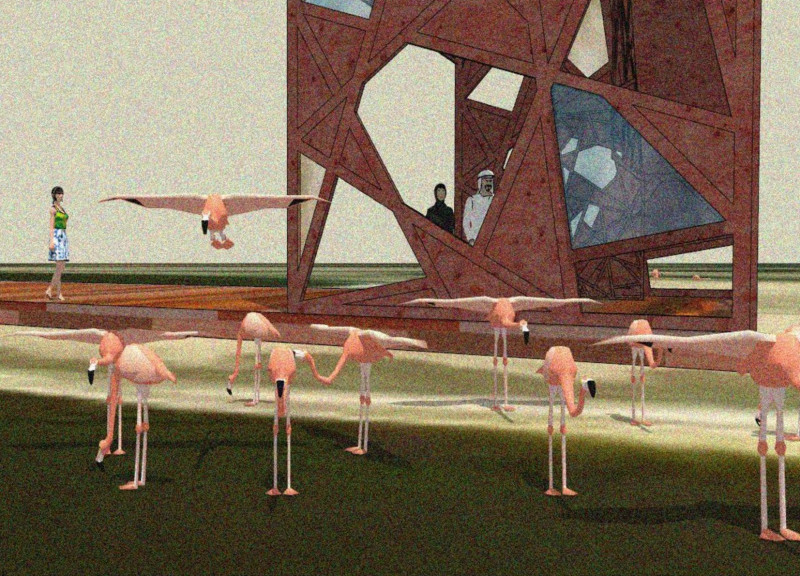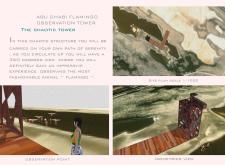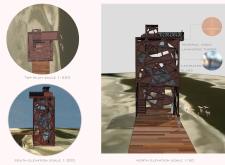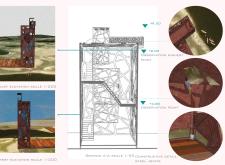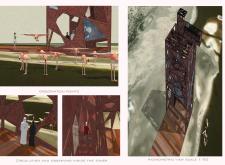5 key facts about this project
The Abu Dhabi Flamingo Observation Tower serves as a prominent architectural feature within the biodiverse landscape of the Abu Dhabi wetlands. Designed to facilitate public engagement with the environment, this structure highlights the unique relationship between architecture and nature by combining functionality with aesthetic appeal. The tower emphasizes observation and education, inviting visitors to experience the local wildlife, particularly flamingos, in their natural habitat.
Innovatively designed as “The Chaotic Tower,” the project embraces an asymmetrical form that creates a series of dynamic viewing platforms. These platforms enable a 360-degree perspective of the surrounding wetlands, fostering an immersive experience. The circulation path within the tower is designed in a spiral, allowing visitors to ascend without obstruction while creating points of interest that vary at each elevation. This design approach encourages exploration and offers multiple vantage points for wildlife observation.
Materiality is a critical aspect of the observation tower’s construction. The primary materials used include laminated timber, laminated glass, and steel. Laminated timber provides warmth and expresses an organic connection to the environment. Laminated glass permits natural light and unobstructed views, while steel is utilized for structural integrity, ensuring the tower remains robust against environmental factors. This choice of materials not only contributes to the visual appeal of the structure but also aligns with sustainability goals.
Innovative Structural Design
The observation tower distinguishes itself through its unique structural composition. Its asymmetrical form disrupts conventional architectural silhouettes, creating a visually engaging landmark that resonates with the chaotic beauty of the wetlands. The tower incorporates cantilevered sections that extend outward, promoting outdoor interaction and facilitating unobstructed sightlines towards the wildlife habitat.
The thoughtful integration of both open and sheltered spaces encourages varying forms of engagement. For instance, exposed viewing platforms encourage wildlife observation, while enclosed sections offer shelter for educational activities. Each level within the tower has been purposefully designed to cater to diverse visitor experiences, from passive observation to active learning.
Environmental Integration and Educational Focus
The architecture of the Flamingo Observation Tower is deeply rooted in its commitment to environmental conservation and educational outreach. Located within a delicate ecosystem, the design minimizes ecological disruption while enhancing the public’s understanding of the natural surroundings. By offering a space for observation, the tower contributes to ecological awareness and appreciation among visitors.
The building acts as a venue for educational programs, where visitors can learn about the local ecosystem, conservation efforts, and the significance of the flamingos in this habitat. The integration of signage, interactive displays, and guided tours within the tower enhances the educational experience, reinforcing the importance of biodiversity and environmental responsibility.
For further insights into the architectural plans, sections, and design considerations, readers are encouraged to explore the presentation of the Abu Dhabi Flamingo Observation Tower. Delving into the architectural specifics provides a comprehensive understanding of the project's significance in contemporary architectural discourse.


